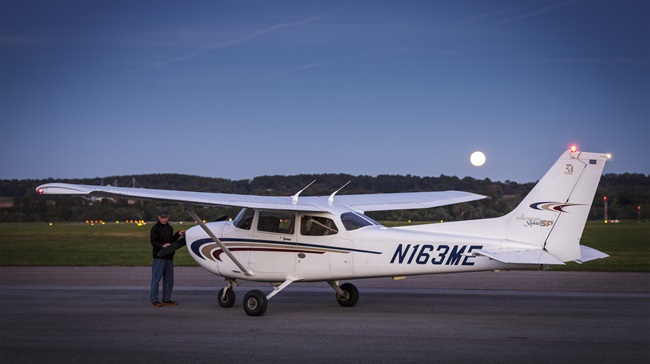NextGen progressing
Airlines fail to equip
For months, the airlines have been spending millions of dollars campaigning to take over the U.S. air traffic control system. Disguised as privatization in House Bill H.R. 2997, the airlines claim that the current ATC system is outdated and behind in the latest advancements. While they and their special interests criticize the world’s busiest, safest, and most efficient system, the NextGen Advisory Committee (NAC) is working to modernize it.
Since its establishment in 2010, the NAC has been instrumental in implementing ATC modernization initiatives. Led by airline executives and industry leaders, the NAC collaborates with stakeholders to set priorities and deliver real benefits in moving NextGen forward.
A U.S. Department of Transportation Inspector General report highlights the accomplishments the FAA has made under the leadership of the NAC, focusing on the progress of the four NAC priorities: multiple runway options, performance-based navigation, surface operations, and data comm.
Multiple runway options has allowed the FAA to reduce separation between aircraft because of improved wake categorization standards. The FAA has implemented this capability at some of the busiest U.S. airports including Hartsfield-Jackson Atlanta International Airport, Houston's George Bush Intercontinental Airport, and New York’s John F. Kennedy International Airport.
The report also states that performance-based navigation, which enables aircraft to fly more directly from departure to arrival using satellite signals, has reached initial operational capability three months ahead of schedule in the Northern California Metroplex. Between September 2014 and April 2015, the FAA conducted a phased implementation of 44 routes covering the greater San Francisco Bay Area and Sacramento.
Surface operations, another NAC priority, also have improved, and the FAA has implemented the System Wide Information Management (SWIM) Surface Visualization Tool (SVT) ahead of schedule at five terminal radar approach control facilities. The system allows tracon controllers to better monitor congestion and plan for changes on airport runways and taxiways, especially during inclement weather.
Finally, data comm has made significant strides with the agency implementing the capability at towers across the nation, approximately two and a half years ahead of schedule.
For power-hungry airlines, it’s not enough. Despite the achievements being made with NextGen technology and modernization, the airlines and their front groups remain critical of the current airspace system and are calling to overhaul it entirely.
Separating the ATC system from the FAA and giving it to a 13-member board dominated by the airlines and its stakeholders is a move that would increase the federal deficit by $100 billion, according to a Congressional Budget Office report.
As a representative to the NAC, Baker has witnessed the significant progress being made with modernization. "The implementation of new technology is moving forward and users from all segments of aviation are beginning to realize its many benefits," Baker said. "Throwing away this progress and wasting $100 billion on changing a system recognized as the envy of the world would be a mistake."
Ironically, NextGen capabilities are already saving some major air carriers who have equipped their fleets with the necessary technology millions in fuel costs.
According to a NAC document from October, with just 73 percent of its fleet equipped with data comm technology, Southwest Airlines has seen a reduction of 13,725 taxi out minutes in only a three-month period. The carrier also has started using required navigation performance flight procedures at some of its airports, and, once implemented at all airports, the company is expected to save nearly $60 million per year.
The new technology the airlines claim to want is already largely available, but only a fraction of the fleet is taking advantage of it. According to the FAA, less than 20 percent of U.S. carriers are equipped for the Automatic Dependent Surveillance-Broadcast Out 2020 deadline.
The FAA has in place today more than 4,500 augmented GPS approaches, which allow aircraft to land in poor weather, yet only one percent of the airline fleet is equipped to fly these approaches compared to 80 percent of general aviation.
The main issue for NextGen lies with the airlines’ inability to comply with equipping their aircraft to accept much of the already deployed modernized technology.
AOPA is encouraging members to contact their representatives in the House and consider contributing to the AOPA advocacy fund. One hundred percent of donations will be used for fighting so-called ATC privatization and educating the public about GA.



